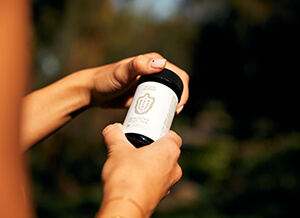TV ads for cruises or fishing expeditions make sea travel look so glamorous. However, soon after tourists step aboard a vessel, they often begin to feel sick. Symptoms like nausea, headaches, and vomiting are clear signs people are suffering a bout of seasickness.
Although seasickness is normal, it can make the first few days of your voyage dreadful. Thankfully, there are techniques people could use to minimize the severity of seasickness. For instance, many sailors now use CBD oil before heading onto a boat. Although CBD may not be the “standard therapy” for seasickness, it’s gaining a lot of attention for this condition.
Can Tribe CBD Oil Seriously Soothe Seasickness?
Anecdotal reports suggest CBD can significantly reduce the severity of motion sickness. It’s unclear how CBD has this effect, but some researchers suggest it has to do with CBD’s reaction to serotonin receptors. Although serotonin is most associated with mood, new studies indicate abnormal serotonin levels are linked to nausea. By naturally regulating serotonin, CBD oil may mitigate the severity of seasickness.
A rat trial at the University of Guelph also suggested CBD works great for nausea symptoms. For this study, Canadian researchers examined CBD and CBG’s effect on nausea. Interestingly, when rats took doses of CBD, they appeared to have “suppressed” nausea symptoms like vomiting. However, when scientists introduced the cannabinoid CBG, it seemed to have a weaker effect on nausea.
This suggests that CBD and CBG have a contradictory impact on nausea. While CBG seems to have potential in many other areas, people most concerned with motion sickness should focus on CBD-rich oils before a sea journey.
It’s also worth mentioning that delta-9 THC has a strong reputation for increasing appetite and soothing nausea. Of course, legal CBD oils must contain ≤ 0.3 percent delta-9 per federal law. However, since delta-9 has a positive association with nausea prevention, some seasickness sufferers seek out this tiny amount of THC.
Unlike broad-spectrum or isolate products, full-spectrum CBD oil can contain ≤ 0.3 percent delta-9. While these traces of delta-9 won’t get users “high,” it may provide some anti-nausea effects observed in early THC trials.
So, How Should People Use CBD For Seasickness?
For seasickness, it’s best to use a high-quality CBD oil at least 30 minutes before your voyage. Everyone metabolizes CBD at different rates, but this 30-minute window ensures the CBD will be in your system as your ship sets sail.
It’s also recommended that seasickness sufferers use CBD oil rather than CBD gummies. With CBD oil, you will enjoy a high absorption rate if you place it on the sublingual glands under your tongue. Sublingual doses ensure you will enjoy the max potency of your CBD almost instantly.
By contrast, CBD gummies tend to have a low & slow release, which tends to be more effective for micro-dosing during the day. Also, considering seasickness alters a person’s appetite, you’ll have an easier time swallowing a CBD oil while on your voyage versus eating a bag of CBD gummies.
Stack Tribe CBD With Other Seasickness Remedies!
On its own, Tribe CBD oil may significantly help people struggling with seasickness. However, you could use other simple techniques with CBD to reduce seasickness symptoms.
Most significantly, please remember to stay well-hydrated! You could also naturally decrease nausea by adding some fresh ginger to your water or sipping on a non-caffeinated ginger-infused tea. Many studies suggest ginger root has impressive anti-nausea properties.
Using these strategies, you should have a stress-free seafaring experience!




